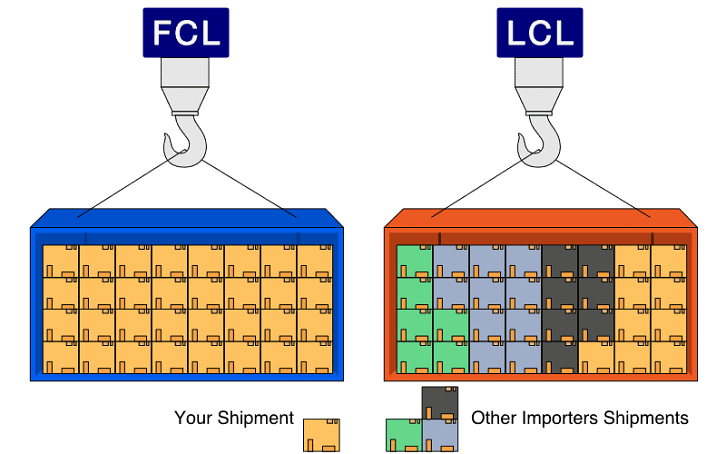Full Container Load vs. Less than Container Load: the Difference in Shipping

What is the difference between FCL and LCL in Shipping Terms?
The main difference between FCL and LCL is that the buyer is sharing space in a container for an LCL shipment, compared to renting the full container space under an FCL agreement. To help you understand and navigate these options, we’ve created a table that can guide you in deciding which shipping method makes the most sense for your needs.
How to Choose Between FCL and LCL: it’s in the Fine Details
There are numerous factors that a shipper should consider when choosing an ocean freight arrangement. There is more to consider apart from the shipment volume when deciding to use FCL or LCL. To help you understand the in and outs of FCL and LCL shipments, we’ve created the table below to guide your decision making.
Cell | LCL: Less than Container Load | FCL: Full Container Load |
Shipment’s Volume |
|
|
Shipment’s Weight |
|
After exceeding the maximum weight, the shipper must move the remainder of the cargo to a different container. |
Freight Cost |
|
|
Speed |
|
|
Security and Damages |
|
|
Trackability |
|
|
Split Shipment |
|
|
Delivery Appointments |
|
|
Booking a Container Space During China Holidays |
|
|
Amazon FBA |
|
Pallets can either be added by the supplier or by the freight forwarder. It is much easier if the supplier can include pallets to avoid delays and possible additional fees incurred by bringing the goods into a warehouse for sorting and palletizing. |
Local Charges |
|
|
Customs Clearance and Customs Exam |
|
|
Which is cheaper?
Going through the differences between FCL and LCL might be overwhelming, and as a buyer, the usual question is which of the two methods is cheaper? There is no simple answer to this question, as there are several factors that need to be considered. The primary considerations are the volume of the shipment, the route, the timeline, and the cost.
While LCL allows buyers to ship lower volume for their shipments, the freight, including the local charges is usually higher than FCL, when comparing the per CBM rate. Thus, it is helpful always to compare LCL pricing with FCL when the CBM is high enough. As a general rule, if the shipment is around 15 CBM, it is advisable to check with your freight forwarding company for the rates of both LCL and FCL and compare the freight cost, transit time, and the other possible charges that might incur during the logistics process. Knowing shipping basics, and having a trustworthy freight forwarder will be beneficial for any buyer when choosing the right method to ship their products.
